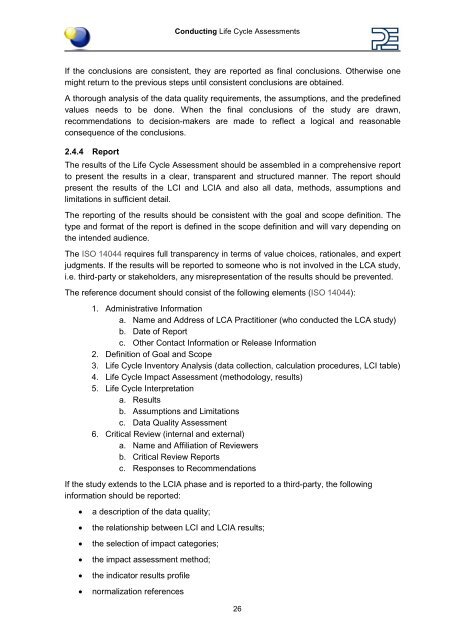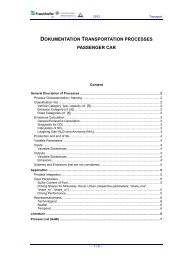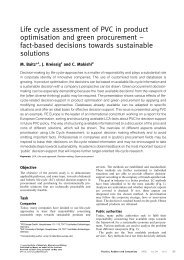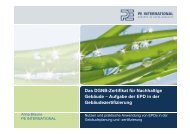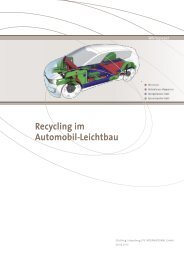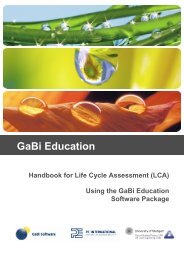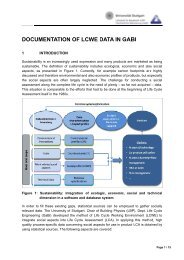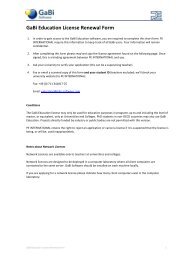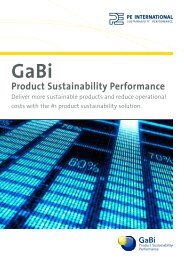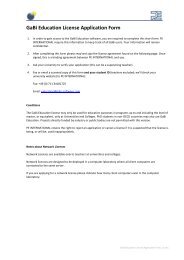Paper_Clip_Tutorial Part1.pdf - GaBi Software
Paper_Clip_Tutorial Part1.pdf - GaBi Software
Paper_Clip_Tutorial Part1.pdf - GaBi Software
Create successful ePaper yourself
Turn your PDF publications into a flip-book with our unique Google optimized e-Paper software.
Conducting Life Cycle Assessments<br />
If the conclusions are consistent, they are reported as final conclusions. Otherwise one<br />
might return to the previous steps until consistent conclusions are obtained.<br />
A thorough analysis of the data quality requirements, the assumptions, and the predefined<br />
values needs to be done. When the final conclusions of the study are drawn,<br />
recommendations to decision-makers are made to reflect a logical and reasonable<br />
consequence of the conclusions.<br />
2.4.4 Report<br />
The results of the Life Cycle Assessment should be assembled in a comprehensive report<br />
to present the results in a clear, transparent and structured manner. The report should<br />
present the results of the LCI and LCIA and also all data, methods, assumptions and<br />
limitations in sufficient detail.<br />
The reporting of the results should be consistent with the goal and scope definition. The<br />
type and format of the report is defined in the scope definition and will vary depending on<br />
the intended audience.<br />
The ISO 14044 requires full transparency in terms of value choices, rationales, and expert<br />
judgments. If the results will be reported to someone who is not involved in the LCA study,<br />
i.e. third-party or stakeholders, any misrepresentation of the results should be prevented.<br />
The reference document should consist of the following elements (ISO 14044):<br />
1. Administrative Information<br />
a. Name and Address of LCA Practitioner (who conducted the LCA study)<br />
b. Date of Report<br />
c. Other Contact Information or Release Information<br />
2. Definition of Goal and Scope<br />
3. Life Cycle Inventory Analysis (data collection, calculation procedures, LCI table)<br />
4. Life Cycle Impact Assessment (methodology, results)<br />
5. Life Cycle Interpretation<br />
a. Results<br />
b. Assumptions and Limitations<br />
c. Data Quality Assessment<br />
6. Critical Review (internal and external)<br />
a. Name and Affiliation of Reviewers<br />
b. Critical Review Reports<br />
c. Responses to Recommendations<br />
If the study extends to the LCIA phase and is reported to a third-party, the following<br />
information should be reported:<br />
• a description of the data quality;<br />
• the relationship between LCI and LCIA results;<br />
• the selection of impact categories;<br />
• the impact assessment method;<br />
• the indicator results profile<br />
• normalization references<br />
26


